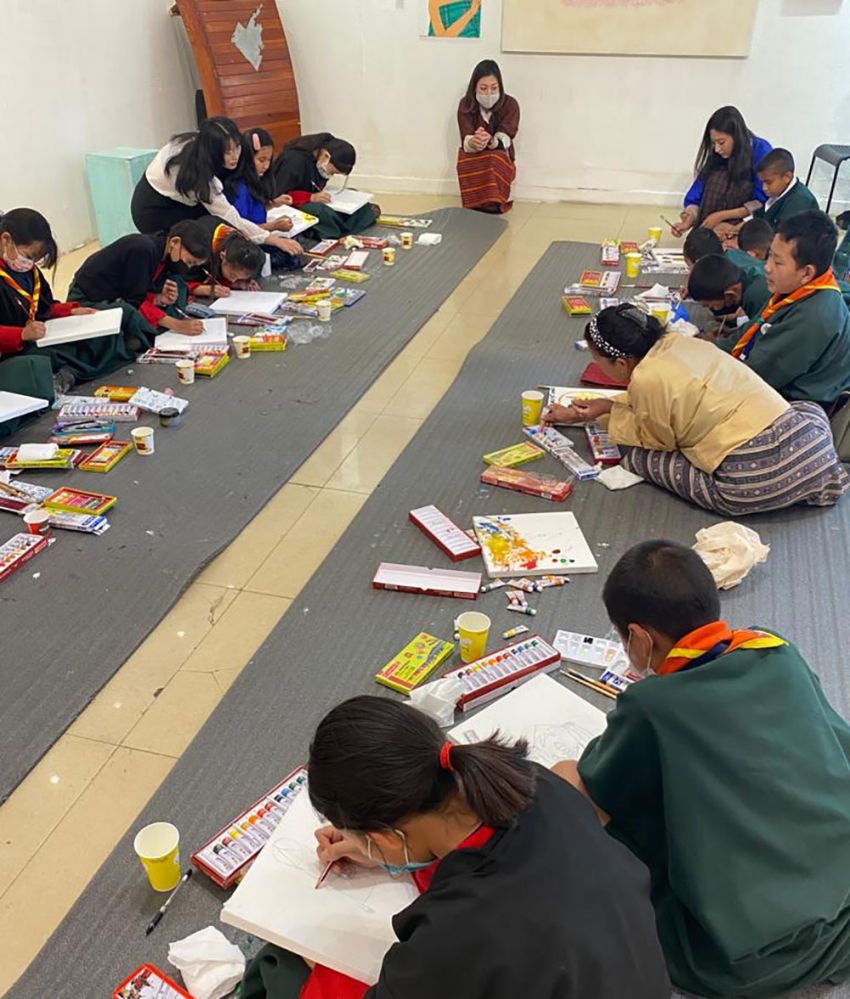
A surprised bright red sun looks down as an angry asteroid heads towards the gloomy earth. On the top left corner, a wobbly scribble reads:
“As you can see
The earth is in danger
We have to help the earth clean (up)…”
If urgent action is not taken against plastic waste, this is what the class V student of Changangkha Middle Secondary School, Ugyen Sonam Pelbar, imagines the world he will be living in.
Yesterday morning, to observe World Environment Day, the 10-year-old and 12 other young children from the school sat for an hour at VAST Bhutan in Chubachu to paint the world they envisioned. Four of them were special needs children.
The children are clear about what they want. Most of them think 3RS (Reduce, Reuse, and Recycle) is the way forward to a plastic-free world.
Two hands embracing a fresh earth by Tashi Gyeltshen Norbu and a green swan swimming on fresh blue water painted by Sangay, for example, is a bold statement.
This year’s World Environment Day focuses on solutions to plastic pollution and ecological restoration under the campaign #BeatPlasticPollution.
Plastic pollution is a global problem. United Nations Environment Programme reports that more than 430 million tonnes of plastic are produced every year across the world, half of which is designed to be used once.
Only nine percent of that is recycled. Without meaningful action, flows of plastic waste into aquatic ecosystems are expected to nearly triple from around 11 million tonnes in 2016 to around 29 million tonnes in 2040.
Hosted by VAST Bhutan in collaboration with Save the Children Bhutan and WWF-Bhutan, the two-day programme that ended yesterday celebrated ‘Women for Environment’ and children, bringing women and children to the fore to engage them as active participants in raising awareness about environmental conservation and sustainable practices.
The event encourages the shift model that provides young leaders (aged 14-25 years) with access to the tools, resources, funding, and networks they need to design and implement impactful community campaigns, on issues that matter most to them.
Save the Children’s Advocacy and Communications Coordinator Deepika Adhikari said that the model shifts the attention to young people to address their own problems. “To date, adults had been discussing the issues and we are nowhere close to solving them.”
The art exhibition will be open for a month.












